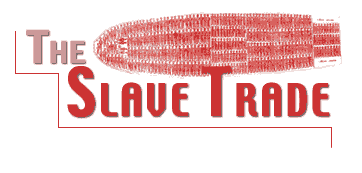From the 17th century until the 19th century, almost twelve million Africans were broug ht to the New World against their will to perform back-breaking labor under terrible conditions. The British slave trade was eventually abolished in 1807 (although illegal slave trading would continue for decades after that) after years of debate, in which supporters of the trade claimed that it was not inhumane, that they were acting in the slaves’ benefit, etc. The rationalizations and defenses given for slavery and the slave trade were absurd and self-serving. Slavery was a truly barbaric, and those who think that they can control what another group of people eat, where they sleep, whether they are to live or die, or even whether they are to be bought or sold, are acting on a totally inhumane level. But just as important as the critique of the slave trade is that need to discover how the enslaved themselves reacted: through submission; or through resistance? From the African coast to the West Indies, and up to the abolition of the slave trade, we can discover many forms of resistance. ht to the New World against their will to perform back-breaking labor under terrible conditions. The British slave trade was eventually abolished in 1807 (although illegal slave trading would continue for decades after that) after years of debate, in which supporters of the trade claimed that it was not inhumane, that they were acting in the slaves’ benefit, etc. The rationalizations and defenses given for slavery and the slave trade were absurd and self-serving. Slavery was a truly barbaric, and those who think that they can control what another group of people eat, where they sleep, whether they are to live or die, or even whether they are to be bought or sold, are acting on a totally inhumane level. But just as important as the critique of the slave trade is that need to discover how the enslaved themselves reacted: through submission; or through resistance? From the African coast to the West Indies, and up to the abolition of the slave trade, we can discover many forms of resistance.
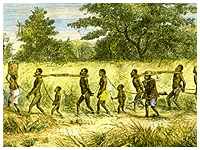 The country of Portugal was one of the first countries to start selling slaves. Portugal found out about selling slaves for profit by sheer luck. The first slave purchase is said to have taken place in 1441 when the Portuguese caught two African males while they were along the coast. The Africans in the nearby village paid them in gold for their return. The country of Portugal was one of the first countries to start selling slaves. Portugal found out about selling slaves for profit by sheer luck. The first slave purchase is said to have taken place in 1441 when the Portuguese caught two African males while they were along the coast. The Africans in the nearby village paid them in gold for their return.
Slave traders used many slave forts to protect themselves and their shipments. This was a way of guarding themselves against any attackers. It was also a way of holding slaves until they could be sold and shipped to the New World.
The Africans were sold in many ways. They were sold to traders by other Africans, and eventually forced into slavery by men with guns. From here, slaves were placed aboard ships to be taken across the Atlantic on a voyage that was eventually coined "the middle passage."
The middle passage of the Trans-Atlantic slave trade consisted of immeasurable brutality. Africans were chained and packed into quarters unfit for movement or proper breathing. The only hope of escape rested in suicide by jumping overboard. With the British Parliament's outlaw of the slave trade in 1808, the naval superpower set sail to enforce total European abolition. The Society of Friends, along with other such concerned parties, published accounts of the horrific middle passage to distribute amongst still practicing nations. These accounts, supported by memoirs such as Oladuah Equiano's, who survived the journey, informed the masses and catalyzed the destruction of slavery. The atrocities continued once the Africans arrived in the West Indies, but resistance began to grow once on the plantation.
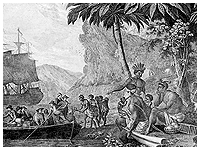 In the West Indies, slaves searched for an outlet to vent their frustrations. To be successful in alleviating their frustrations and resisting in some way, slaves had to unite. One of the more popular ways slaves accomplished this was through the Christian religion. When it was allowed by the planters, Christianized slaves could resist the institution of slavery by looking to God. The ideals that Christianity held were easy for Africans to understand and adapt. Doing so meant that the slaves would lose some of their African heritage, but the plusses far outweighed the minuses. Slaves "Africanized" Christianity in the West Indies and thus created a new culture among them. Those who chose, or who were allowed, to be baptized were successful at resisting slavery and uniting together with a common interest in God. However, the road to Christianity was often bumpy and dangerous. The missionaries from Europe regularly faced opposition by whites and indifference by blacks. In the end, the effort proved to be worth the time and energy invested. The Christianization of slaves was a major factor in bringing an end to the oppression that was the slave trade. In the West Indies, slaves searched for an outlet to vent their frustrations. To be successful in alleviating their frustrations and resisting in some way, slaves had to unite. One of the more popular ways slaves accomplished this was through the Christian religion. When it was allowed by the planters, Christianized slaves could resist the institution of slavery by looking to God. The ideals that Christianity held were easy for Africans to understand and adapt. Doing so meant that the slaves would lose some of their African heritage, but the plusses far outweighed the minuses. Slaves "Africanized" Christianity in the West Indies and thus created a new culture among them. Those who chose, or who were allowed, to be baptized were successful at resisting slavery and uniting together with a common interest in God. However, the road to Christianity was often bumpy and dangerous. The missionaries from Europe regularly faced opposition by whites and indifference by blacks. In the end, the effort proved to be worth the time and energy invested. The Christianization of slaves was a major factor in bringing an end to the oppression that was the slave trade.
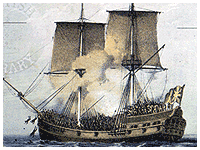 Great debate exists even today over just how and why the British Parliament voted to abolish the slave trade. By the late 1700's, the abolition movement had become strong enough to exert considerable pressure on Parliament, and an array of differing arguments were being made for abolition. Former slave Olaudah Equiano presented both a moral and an economic case for abolition, in the latter sounding a great deal like Adam Smith. Religious groups such as the Providence Society presented a fiery moral case based on their interpretation of the scripture. In Parliament, William Wilberforce became the leading abolitionist and, interestingly enough, would argue in a similar fashion as Equiano did, appealing to the people's conscience and using free trade ideas to convince Parliament that abolition would benefit the British Empire commercially. In the end, it might be best to assume that Parliament's vote to abolish slavery was a result of years of resistance on the part of slaves such as Equiano finally making an impact. Great debate exists even today over just how and why the British Parliament voted to abolish the slave trade. By the late 1700's, the abolition movement had become strong enough to exert considerable pressure on Parliament, and an array of differing arguments were being made for abolition. Former slave Olaudah Equiano presented both a moral and an economic case for abolition, in the latter sounding a great deal like Adam Smith. Religious groups such as the Providence Society presented a fiery moral case based on their interpretation of the scripture. In Parliament, William Wilberforce became the leading abolitionist and, interestingly enough, would argue in a similar fashion as Equiano did, appealing to the people's conscience and using free trade ideas to convince Parliament that abolition would benefit the British Empire commercially. In the end, it might be best to assume that Parliament's vote to abolish slavery was a result of years of resistance on the part of slaves such as Equiano finally making an impact.
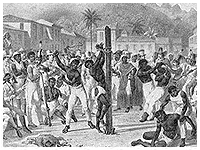
As the account of Equiano demonstrates, slavery as an institution was in trouble under the pressure of a general resistance by the slaves. These slaves were finally making breakthroughs by the late 18th century. Despite the brutal, repressive nature of slavery, the efforts of resistance by the slaves and the abolitionists proved strong enough to overcome this institution.
|



